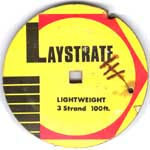Probly Being an old woman , but a bone shaker can crystalise Alluminum in no time .
I guess thats a ABC in there , not an old feral Er Ferous Piston Job .
Incidently Bently adopted alluminum pistons for the RNAS in the first war .
Is Your Triumph an old Boneshaker or one of the Modern ABC ones .

The p.u. Bonevel shed Jap Parts indescriminantly , British mostly stayed put .
NOW , if youve got a 3 in. bellcrank in a 60 Oz ( odd ) .40 up airplane ,
the swines usually pulling sufficent that theres little Line Weighting Differance
between the two ( up'n down ) so theres a ' on ice'ish feel to them .
The Greater Spread of the 4 in give a bigger differential between em in manouvres ,
so the feedbacks better .
First Flight of the Whirlwind ripping round on 60 ft of .016 I think , had a bit of a porpise low .
Was going to close the line spacing as it felt touchy . Decided it was line stretch ' weaving '
in the breeze , OPENED the Line Spacing and it improved things no end , and no porpise .
If You Fly with Excessivly ?? ?? heavy lines , you CAN get virtually No Stretch . Thus Very Direct Controls .
This Is Why some cunning sods us single strand . Its Dirt Cheap ( if you buy by the pound ) so can toss
wobbly pigs tail ones no worries , as you need to. Theyre a bear to look after .
Got A REEL of .018 single strand , as I figure 70 Oz in a good breeze will need it .
18 Thou 7 strand steel can twang in the bottoms of squares when she's blowing .
And good british steel 7 strand .018 Laystrate is getting as rare as people with No Television .


preume that mayt be the real stuff . Maybe .


was 3 strand .012 , 5 strand .015 ( for COMBAT and light / 35 stunters . and 7 strand .018 . Dunno what the S.M.A.E. or N.Z.M.A.A. said that was for . But a G - 51 without its liable to get interesting .
Id better get a picture or two of my packaging for it , as its vastly differant . A Tag . Modelair did lines in NZ into the 70s .